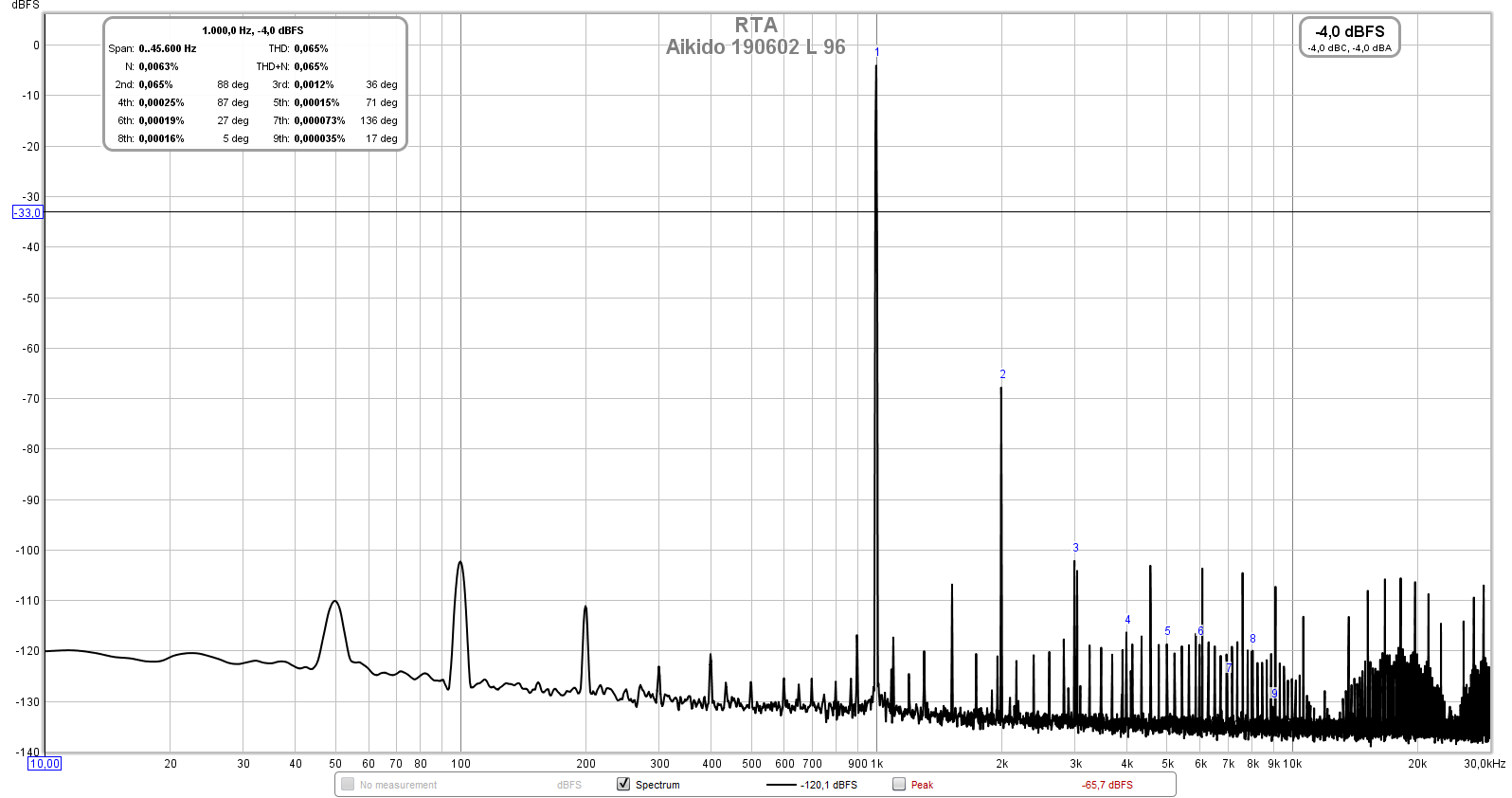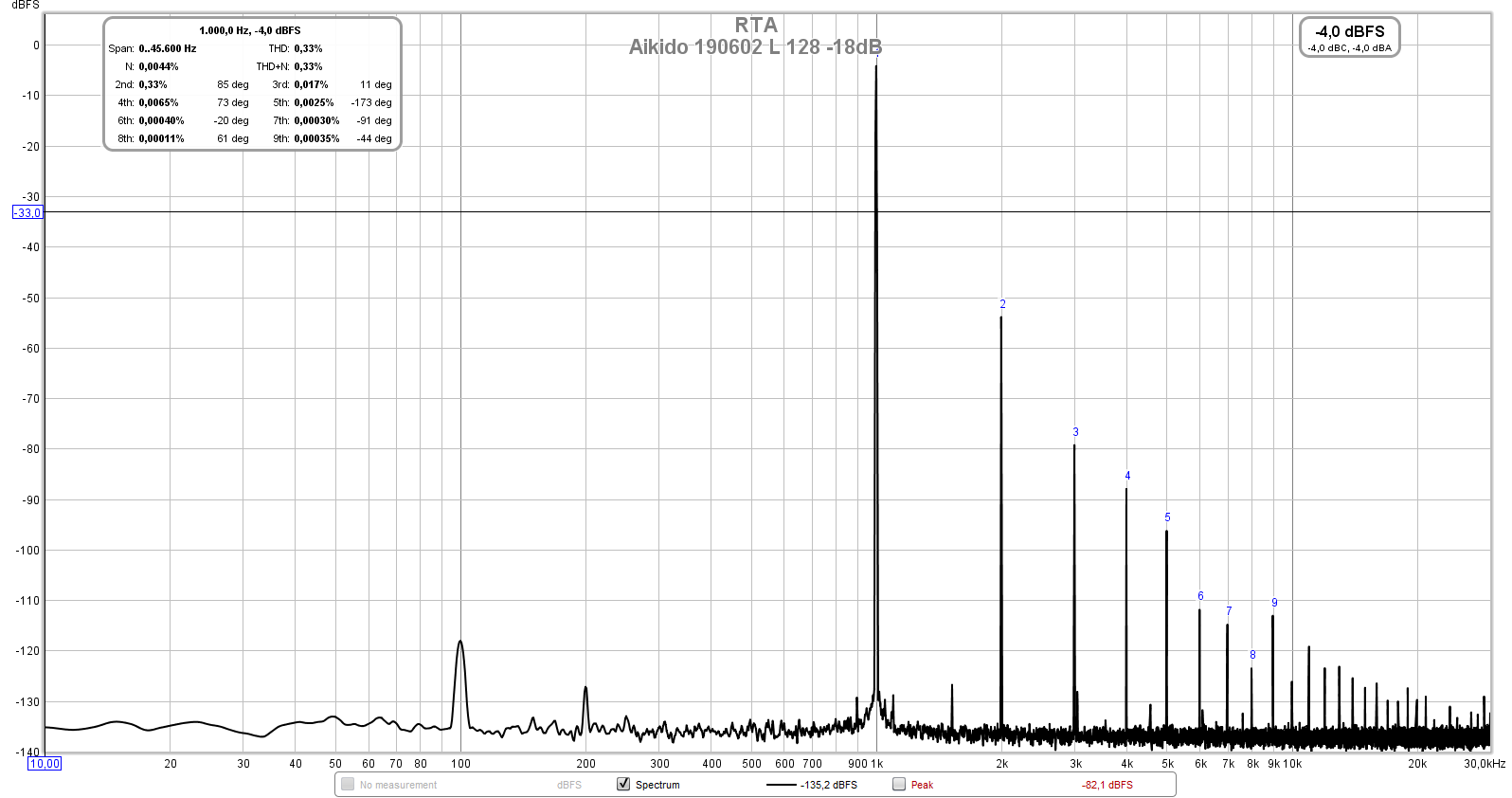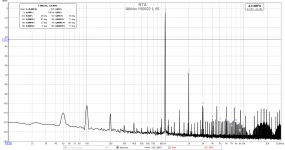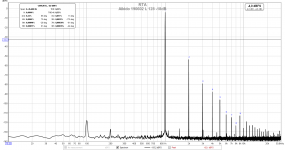Are you doing anything at all on the front besides holes for parts? I went the ebay route cause I didn't know what to do to make it look fancy and the Chinese case was so inexpensive....only $40.
I have not tested the JFETs....beyond swapping them between channels. Although....I didn't swap the input FETs.....hmmm...I think I did test the output voltage once at the pins of the input FETs and it was equal....but still.....maybe it's time I build a testing thingy....especially since I want to build the BA3 Pre and BA3/push pull amp.....
I have not tested the JFETs....beyond swapping them between channels. Although....I didn't swap the input FETs.....hmmm...I think I did test the output voltage once at the pins of the input FETs and it was equal....but still.....maybe it's time I build a testing thingy....especially since I want to build the BA3 Pre and BA3/push pull amp.....
I've seen several references to a build guide, but I sure can't find it. Can someone provide a link?
If not, I'm trying to wire up the input selector switch that came with the second round of Pioneer kits. Any pointers? I don't understand how I'm going to use those 6 pins to switch two stereo channels.
Thanks in advance.
If not, I'm trying to wire up the input selector switch that came with the second round of Pioneer kits. Any pointers? I don't understand how I'm going to use those 6 pins to switch two stereo channels.
Thanks in advance.
Anyone knows what would be distortions and their spectral/phase composition on this preamp compare to the 6sn7 aikido? I love my Aikido, but might go a bit more H2 🙂
I don't have an Aikido with 6SN7s, but here are some measurements from my Aikido that's running E80CC / 6N6P:
First one is at 1.5V RMS out. Ignore the hash to the right of 1 kHz; that's coming from the control circuitry or display of my relay-based volume control.

Second one is at 10V RMS out ... 😀

At a more realistic output level of around 0.7 V RMS, I get approx. 0.02% - 0.03% THD. So not much distortion or H2 in the Aikido ... 😉
Regards, Claas
First one is at 1.5V RMS out. Ignore the hash to the right of 1 kHz; that's coming from the control circuitry or display of my relay-based volume control.
Second one is at 10V RMS out ... 😀
At a more realistic output level of around 0.7 V RMS, I get approx. 0.02% - 0.03% THD. So not much distortion or H2 in the Aikido ... 😉
Regards, Claas
Attachments
I think the whole point of the "aikido" circuit is to cancel distortion...I have no experience with the aikido but it seems to have a reputation for being less euphonic than most tube designs. But I could be wrong.
Can someone explain to me in layman terms
Q1 and q2 and R1 matching?
How do you derive R1?
Take a look at post #3907. NP explains it there.
Essentially, Q1 is the follower run as Idss and R1 sets the current of Q2 (the current source for Q1) to match it.
I believe a matched pair of 2SK170 / LSK170 can also be used for Q1/Q2 in which case R1 is not needed.
I would like to try my Pass Korg as a headphone amp, using AGK 701Q's. Is it as easy as just adding a toggle switch between the out's & then wiring 3 lines to a H/Phone out jack?
The experts here will be able to give you more specific info, but I think you may need to consider a buffer of some sort for impedance matching on your headphone output.
Good luck! Sounds cool.
Thank you so much! Pardon my laziness and not going through the discussion, but has anyone tried to use some more sophisticated PSU with this preamp? Salas' for example? Thanks!I don't have an Aikido with 6SN7s, but here are some measurements from my Aikido that's running E80CC / 6N6P:
First one is at 1.5V RMS out. Ignore the hash to the right of 1 kHz; that's coming from the control circuitry or display of my relay-based volume control.
At a more realistic output level of around 0.7 V RMS, I get approx. 0.02% - 0.03% THD. So not much distortion or H2 in the Aikido ... 😉
Regards, Claas
I have bunch of j113 all matched at 8.6ma.. Can I use them for this?I intend to do full j113 version
I also have octa 170 at 6.3ma what to do if this is the case if I use them with j113
I also have octa 170 at 6.3ma what to do if this is the case if I use them with j113
Last edited:
RE PSU...
Not a lot to be gained (if anything) by PSU, read my posts with comparison with a regulated linear PS and also PS caps tweak (search function is your friend).
Regarding headphone output...
it involves a bit more than a switch. In fact a switch isn't needed at all, but you need a resistor and a capacitor and to take your HP output elsewhere on the board (not exactly at the board's output). Search function is your friend, I detailled the schematics previously and explained the parts needed to do so, and it worked in my case perfectly.
It works perfectly well with my 600 Ohm regular Beyerdynamic headphone, as the Korg's output impedance is around 200 if I remember. Amazingly, it worked also fine with my 66 Ohm Koss Porta Pro, admittely far less HIFI. That is a similar impedance as your HP so my guess is you are likely to get enough power to get a reasonable volume level while not having to suffer from frequency band losses if choosing a large cap in the signal path. Having said that, it might also no work as great as you may wish (who knows) and you may need a proper output buffer for HP use as most HP amp pros would probably advise. BUT the trick is for the sake of a resistor and a cap, jack and cable, you can just try if it works fine for you and if not advise later around a proper HP buffer if ever needed...
The B1 Korg is a fantastic unit, very flexible and forgiving 🙂
Good luck
Claude
PS : getting absolute polarity with HP use can be a prob though, unles switching phase at the source, or using transformers...
Not a lot to be gained (if anything) by PSU, read my posts with comparison with a regulated linear PS and also PS caps tweak (search function is your friend).
Regarding headphone output...
it involves a bit more than a switch. In fact a switch isn't needed at all, but you need a resistor and a capacitor and to take your HP output elsewhere on the board (not exactly at the board's output). Search function is your friend, I detailled the schematics previously and explained the parts needed to do so, and it worked in my case perfectly.
It works perfectly well with my 600 Ohm regular Beyerdynamic headphone, as the Korg's output impedance is around 200 if I remember. Amazingly, it worked also fine with my 66 Ohm Koss Porta Pro, admittely far less HIFI. That is a similar impedance as your HP so my guess is you are likely to get enough power to get a reasonable volume level while not having to suffer from frequency band losses if choosing a large cap in the signal path. Having said that, it might also no work as great as you may wish (who knows) and you may need a proper output buffer for HP use as most HP amp pros would probably advise. BUT the trick is for the sake of a resistor and a cap, jack and cable, you can just try if it works fine for you and if not advise later around a proper HP buffer if ever needed...
The B1 Korg is a fantastic unit, very flexible and forgiving 🙂
Good luck
Claude
PS : getting absolute polarity with HP use can be a prob though, unles switching phase at the source, or using transformers...
Last edited:
PS : getting absolute polarity with HP use can be a prob though, unless switching phase at the source, or using transformers...
I was told that changing the phase at the source isn't the right way to go for headphones so I ended up making a simple low noise op-amp inverting buffer to correct the phase after the Korg.
It matters whether you flip the phase before or after the Korg.
The H2 article has a discussion as to how this works:
http://www.firstwatt.com/pdf/art_h2_v1.pdf
Avdesignguru used some Jensen transformers with good effect but they are not cheap parts.
I'd been using the Korg directly as a headphone amp without an additional buffer on the output and it sounds fantastic. With the extra buffer, it sounds even better. I chose an op-amp buffer because it could share the 24v PSU and I am getting ~0.00104% distortion, so it isn't adding or taking anything away from the Korg sound.
No problem at all to switch the phase before the B1K... as long as you fine tune the B1K differently, that is "for it to have negative H2 by itself regardless the following polarity inversion at speakers". In short, reversing polarity at the source and having the B1K running at say 14V ish (depending on your preference) instead of the usual 9.5V... Job done, no need the reverse polarity afterwards and all should be correct.
That doesn't work with the H2 though as you can't have it running at much hgher bias, unless you mod it. And it is easier with digital sources than with a TT sadly for me.
Re buffer for HP, I guess it all depends on your HP impedance - mine is 650, so easy to drive, but then I could have ran out of steam re volume but that isn't he case thanks to sensitivity efficiency. It may also depend on the expected quality level... HP for me is very secondary, I listen to speakers mainly...
I hope this helps
Claude
That doesn't work with the H2 though as you can't have it running at much hgher bias, unless you mod it. And it is easier with digital sources than with a TT sadly for me.
Re buffer for HP, I guess it all depends on your HP impedance - mine is 650, so easy to drive, but then I could have ran out of steam re volume but that isn't he case thanks to sensitivity efficiency. It may also depend on the expected quality level... HP for me is very secondary, I listen to speakers mainly...
I hope this helps
Claude
Hi Guy's, I would like to try my Pass Korg as a headphone amp, using AGK 701Q's. Is it as easy as just adding a toggle switch between the out's & then wiring 3 lines to a H/Phone out jack?
The circuit is good for driving stuff like 5K ohms or so, but these guys
are like 60 ohms. What would be ideal would be a small inverting power
amp with common ground, like the ACA.
The boards for ACA are in the store for $15, but you can do simpler and
cheaper than that if you want.
I replaced the heater resistors with 510s to lower the level to exactly .6vdc. Still getting channel imbalance at output. 2.3v L and 2.1v R. Input buffer at source of Q1 is 356.5 mV L and 364.7mV R. Input at Nutube is identical, and output at tube is off....2.3v L and 2.1v R. I didn't yet check the voltages at the F pins on the tube but I have reflowed everything twice so far. I guess I have a bad tube?
Couldn't say that Korg B1 is going to work for any but a few headphones based on tech specs i.e. very low power and very high impedance.
Nonetheless, in spite of impedance mismatch, Korg B1 sounds great as buffer for Sony MDR Z1 (80 ohm impedance). Maybe it just adjusts the frequency response somehow.
That's a purely 'subjective' bit, but I am surprised some others are finding their headphones doing well with it, unless the harmonics are also welcome at ear level.
Nonetheless, in spite of impedance mismatch, Korg B1 sounds great as buffer for Sony MDR Z1 (80 ohm impedance). Maybe it just adjusts the frequency response somehow.
That's a purely 'subjective' bit, but I am surprised some others are finding their headphones doing well with it, unless the harmonics are also welcome at ear level.
It has a 300R impedance if I remember well. Guess you adjusted the last output cap (raised value) at the B1 Korg to make sure low frequencies weren't cut off?
That's why I ran 2 separate ways in my set up: one with the big PPP caps that are only 3uF to drive amps, another to drive HP with a big 100uF "quality" electrolytic cap to allow reasonable frequency response.
Claude
That's why I ran 2 separate ways in my set up: one with the big PPP caps that are only 3uF to drive amps, another to drive HP with a big 100uF "quality" electrolytic cap to allow reasonable frequency response.
Claude
- Home
- Amplifiers
- Pass Labs
- B1 with Korg Triode

